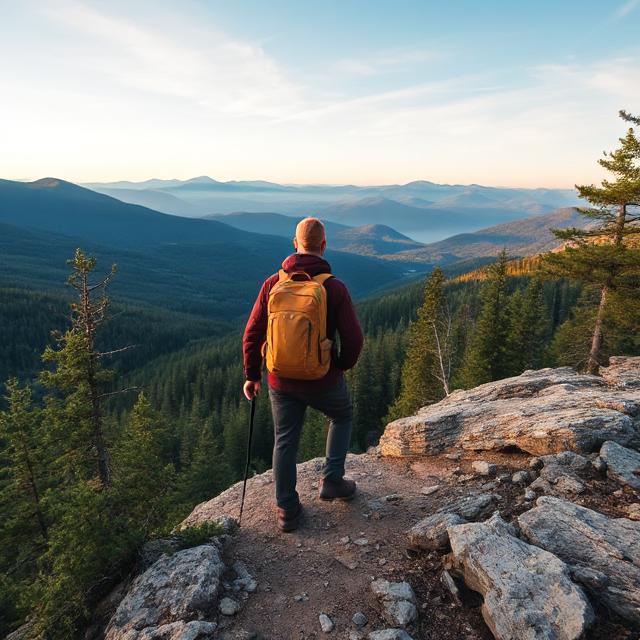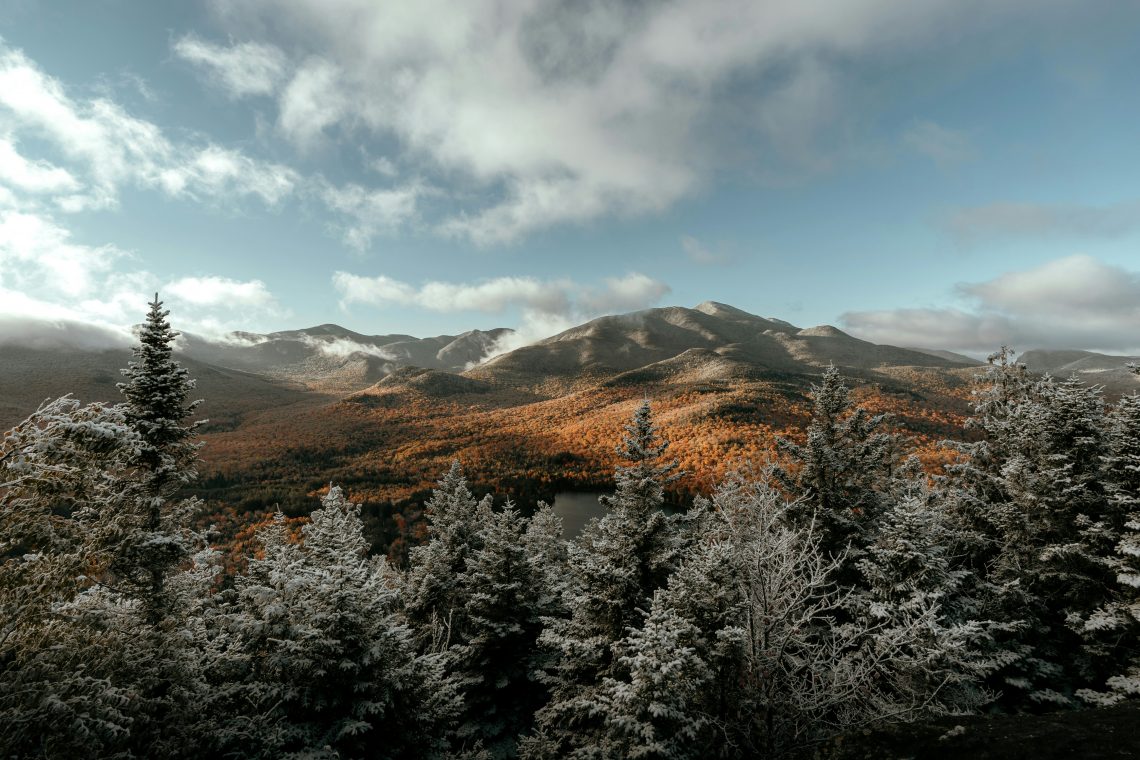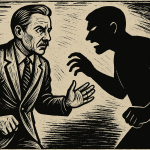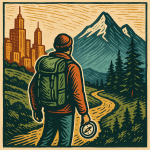There are vacations, and then there are quests. Becoming an Adirondack 46er is the latter. It’s not a weekend retreat with spa water and folded towels. It’s a slow-burn adventure for those with a hunger for grit, trees, and mountaintop epiphanies.
The Adirondack 46ers aren’t a brand. They’re a tribe. A fellowship forged by boots, blisters, and the quiet kind of bragging rights. They’ve climbed all 46 of the High Peaks in New York’s Adirondack Mountains. That’s 46 summits, no chairlifts. Just you, gravity, and whatever snacks you remembered to pack.
So whether you’re a city-dweller daydreaming through your office window or a beginner hiker looking for a long-haul goal, consider this your field guide to becoming a legend with mud on your boots.
What Are the Adirondack 46ers?
Back in the 1920s, before GPS or energy gels, a couple of adventurous souls—Herbert and Bob Marshall, along with their guide George Marshall—started hiking the highest peaks in the Adirondacks. At the time, 46 of them were believed to be over 4,000 feet. These became the High Peaks.
Even after later surveys found that four of those were technically under 4,000 feet (science ruins everything), the list stayed the same. Tradition trumps measurement in this tribe.
From that eccentric goal came a legacy. Today, the Adirondack 46ers is a non-profit organization that promotes environmental stewardship, responsible hiking, and good old-fashioned adventure. Register your climbs, and when you summit all 46, you get a number, a patch, and the quiet satisfaction of knowing you’ve done something most people will never do.
The 46 High Peaks (Tallest to Shortest)
Here they are, listed by elevation. Mount Marcy wears the crown, Couchsachraga Peak humbly brings up the rear.
- Mount Marcy – 5,344 ft
- Algonquin Peak – 5,114 ft
- Mount Haystack – 4,960 ft
- Skylight – 4,926 ft
- Whiteface Mountain – 4,867 ft
- Dix Mountain – 4,857 ft
- Gray Peak – 4,840 ft
- Iroquois Peak – 4,840 ft
- Basin Mountain – 4,826 ft
- Gothics – 4,734 ft
- Mount Colden – 4,714 ft
- Giant Mountain – 4,626 ft
- Nippletop – 4,620 ft
- Santanonis Peak – 4,607 ft
- Bradley Pond (Panther Peak) – 4,442 ft
- Rocky Peak Ridge – 4,420 ft
- Macomb Mountain – 4,405 ft
- Armstrong Mountain – 4,400 ft
- Hough Peak – 4,400 ft
- Saddleback Mountain – 4,515 ft
- Seward Mountain – 4,361 ft
- Marshall Peak – 4,360 ft
- Allen Mountain – 4,340 ft
- Big Slide Mountain – 4,240 ft
- Esther Mountain – 4,239 ft
- Upper Wolfjaw Mountain – 4,203 ft
- Lower Wolfjaw Mountain – 4,175 ft
- Street Mountain – 4,166 ft
- Phelps Mountain – 4,161 ft
- Table Top Mountain – 4,150 ft
- Yard Mountain – 4,120 ft
- Couchsachraga Peak – 3,820 ft
- Colvin – 4,057 ft
- Blake Peak – 3,960 ft
- Cliff Mountain – 3,944 ft
- Nye Mountain – 3,895 ft
- Dial Mountain – 4,020 ft
- Wright Peak – 4,580 ft
- Donaldson Mountain – 4,140 ft
- Seymour Mountain – 4,120 ft
- Emmons Mountain – 4,040 ft
- Redfield Mountain – 4,606 ft
- Porter Mountain – 4,059 ft
- Cascade Mountain – 4,098 ft
- Sawteeth – 4,100 ft
- Cliff Mountain – 3,944 ft
Tallest: Mount Marcy at 5,344 ft
Shortest: Couchsachraga Peak at 3,820 ft (still a bear to reach)

A Brief History of the Adirondacks and the 46ers
The Adirondack Park was created in 1892, and it’s still one of the most unique land experiments in the U.S. Over six million acres, it’s a patchwork of public and private land where towns and wilderness live side by side. Unlike a national park, people live here. And hike here. And occasionally get lost here.
The 46ers officially formed in 1948, growing from a few spirited hikers to a respected conservation-minded organization. They maintain trails, assist in rescues, and quietly encourage people to push themselves harder than they thought possible.
Today, there are over 14,000 registered 46ers. That may sound like a lot until you realize there are 332 million people in the U.S. You’re still in rare company.
Wildlife You Might Meet
Hiking these trails is a master class in unexpected encounters. Here’s who might show up:
- Black bears – Usually more interested in your trail mix than you. Hang your food and don’t panic.
- White-tailed deer – Graceful, ghostlike, and everywhere.
- Moose – Rare, but majestic. Give them space.
- Eastern coyotes – Shy, not to be confused with wolves.
- Pine martens – Like a weasel with charisma.
- Loons, owls, and hawks – Your own soundtrack.
Pack binoculars, but keep your wits. And leave the selfie stick in the car.
Trees You’ll March Among
The Adirondacks aren’t just a bunch of rocks. They’re a living cathedral of bark and leaf.
- Sugar maples – Especially stunning in fall.
- Yellow birch – Silvery bark, looks like it belongs in a dream.
- Red spruce and balsam fir – Up high, it smells like Christmas.
- Eastern hemlocks – Graceful giants near streams.
Knowing your trees is part of knowing the land. You don’t need a PhD in botany, but a little respect goes a long way.
When to Hike (and When to Stay Home)
Spring (mud season): Trails are sloppy, streams are high, and the DEC will politely suggest you go somewhere else. Best to wait.
Summer: Dry trails, long days. Also: crowds. If you’re aiming for Cascade or Marcy, start before dawn or pack patience.
Fall: Peak season in every way. Foliage is fire, temps are ideal, and bugs vanish. The gods smile on autumn hikers.
Winter: Only for the brave. Snowshoes and spikes mandatory. But the solitude and snow-covered peaks? Unreal.
For fewer people: midweek hikes, early starts, or off-the-beaten-path peaks like Street or Nye.
Where to Stay
You have three choices:
1. Classic Lodges
Places like the Keene Valley Lodge, or Lake Placid’s Golden Arrow offer rustic charm, hot meals, and great basecamp vibes.
2. Rustic Cabins
Cabins at Heart Lake, Johns Brook Lodge, or on private rentals in Keene and Upper Jay offer fire pits, solitude, and proximity to trailheads.
3. Stealth Camping
Legal on state land if 150+ feet from trails and water. No fires above 4,000 feet. Leave no trace, and you’ll leave with a story.
Books for the Trail (or Your Nightstand)
A mix of boots-on-the-ground guides and soul-searching reads:
Practical Guides
- “Adirondack Trails: High Peaks Region” by ADK Mountain Club
- “Explorer’s Guide: 46 High Peaks” by James R. Burnside
- “High Peaks Trails” (Adirondack Mountain Club)
Personal & Narrative
- “The Other 54” by Bill Ingersoll – For when the 46 aren’t enough.
- “Short Carries: Essays From Adirondack Life” by Elizabeth Folwell – Sharp, insightful, human.
Final Thoughts from a Dapper Savage
Becoming a 46er isn’t about racking up summits like it’s a punch card. It’s about building something inside yourself—resilience, reverence, readiness. It’s a wilderness pilgrimage. The views are the reward, but the grit is the gift.
You don’t need to be elite. Just consistent. Smart. Curious. Maybe a little stubborn.
So lace up. Load your pack. Learn your trees. And when the weather turns, and your legs shake, and you’re five miles from cell service, remember: This is exactly where legends begin.






Comments by The Dapper Savage